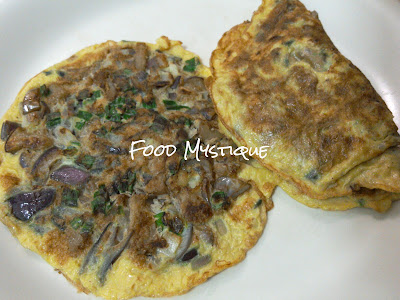Celery has numerous important nutrients that are beneficial to overall health. It may help in the following amongst many others:- protects and lessens the risk of heart diseases; reduces inflammation in the body - arthritis, osteoporosis, asthma; supports digestion and eases flatulence; fiber for healthy digestive tract and aids in easing menstrual discomfort.
A word of caution for those on medication. Since celery cannot be interacted with certain drugs, consult a doctor if on drugs especially depressants and those that are for thyroid function. Besides that, avoid consuming it if easily susceptible to developing food allergy as celery especially the root can be a common cause of food allergy.
Having said that, the pros are more than the cons and thus this important vegetable is not to be excluded for those who do not have problematic food issues. Do eat moderate servings regularly a few times in a week. And of course, my recipe for today is including celery as one of my ingredients in braised chicken using the Chinese style of cooking; tasty and full of healthy goodness!
Braised Chicken with Celery
500g chicken legs
1/8 tsp ground black peppercorns
1 tsp light soya sauce
A word of caution for those on medication. Since celery cannot be interacted with certain drugs, consult a doctor if on drugs especially depressants and those that are for thyroid function. Besides that, avoid consuming it if easily susceptible to developing food allergy as celery especially the root can be a common cause of food allergy.
Having said that, the pros are more than the cons and thus this important vegetable is not to be excluded for those who do not have problematic food issues. Do eat moderate servings regularly a few times in a week. And of course, my recipe for today is including celery as one of my ingredients in braised chicken using the Chinese style of cooking; tasty and full of healthy goodness!
Braised Chicken with Celery
500g chicken legs
1/8 tsp ground black peppercorns
1 tsp light soya sauce
- Chop chicken into moderate pieces and mix together with pepper and sauce. Set aside to marinate while preparing the ingredients as below.
200g celery
150g carrot
1 small onion
4 pips garlic
20g ginger
2 dried chillies or more
100 ml water
1 tbsp water
1 tsp oyster sauce
1/4 tsp salt
1 tsp cornflour
1/2 tbsp cooking oil
1/2 tbsp sesame oil
1 tbsp rice wine
- Julienne celery into 1/2 cm widths.
- Cut carrot lengthwise into halves and julienne into 1 cm widths.
- Slice onion lengthwise into 1/2 cm wedges.
- Lightly crush garlic and discard skin. Trim the heads.
- Scrape skin from ginger and julienne thinly.
- Snip chillies into 1 cm pieces.
- Mix together 1 tbsp water, oyster sauce, salt and cornflour.
How to cook
- Coat heated wok/pan with cooking oil and sear chicken, garlic and ginger over high heat for 2 minutes or until nicely browned.
- Add 100 ml water, carrot, chillies and bring to a boil. Turn heat to low, cover and braise for 20 minutes or until chicken is cooked.
- Remove cover, turn heat to high and add celery and onion. Cook for 1 minute.
- Mix in cornflour mixture and cook another 1 minute.
- Stir in sesame oil and rice wine for 1/2 minute and turn off heat. Dish out and serve with rice (serves 2 to 3 pax).
** Double the water and seasonings for more gravy if preferred.
Here's wishing everyone abundant blessings in the year 2018. Happy New Year!
~Kim~





























































